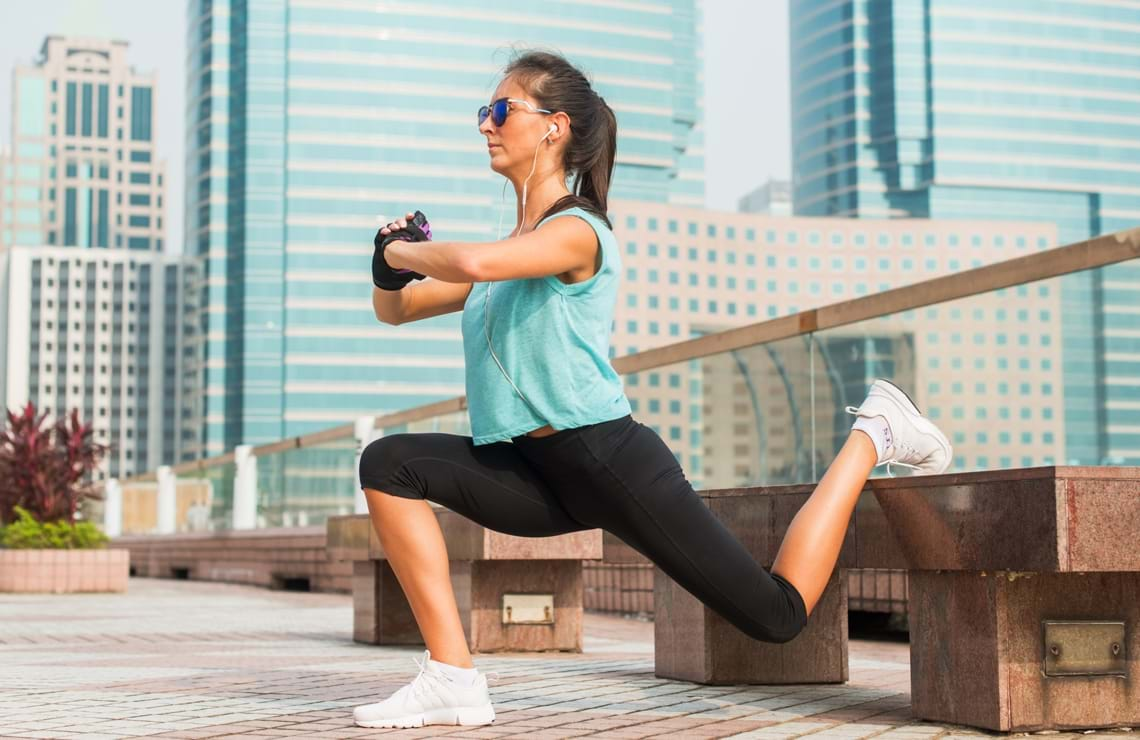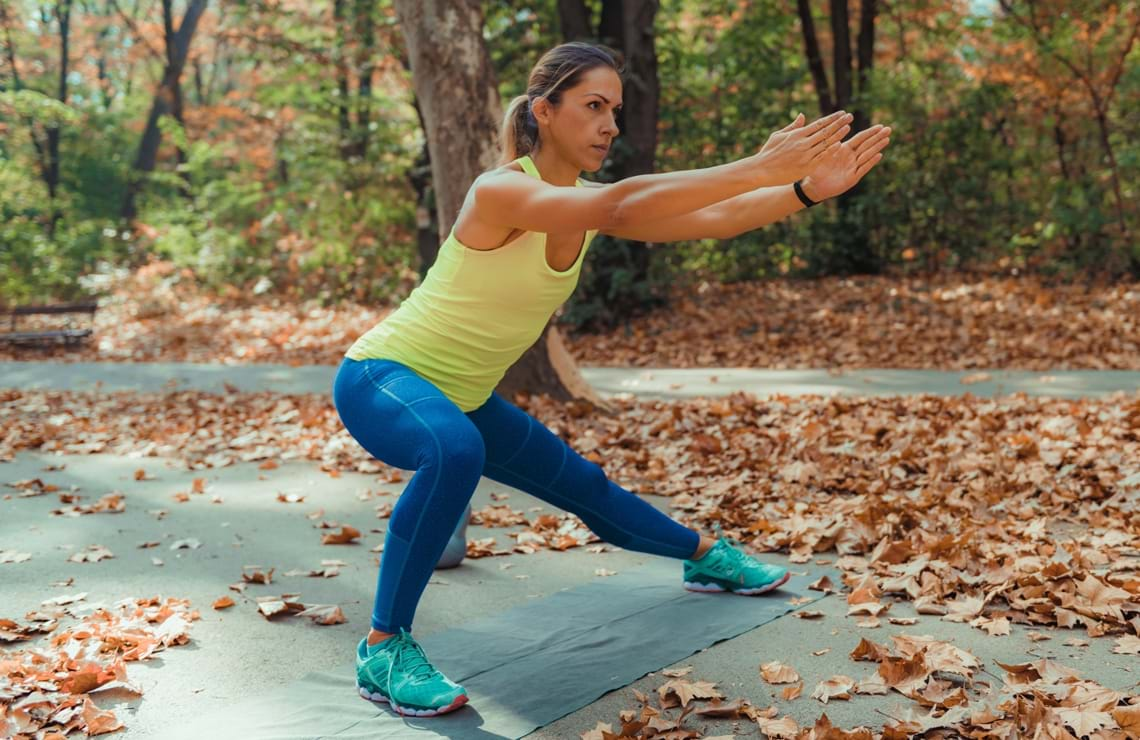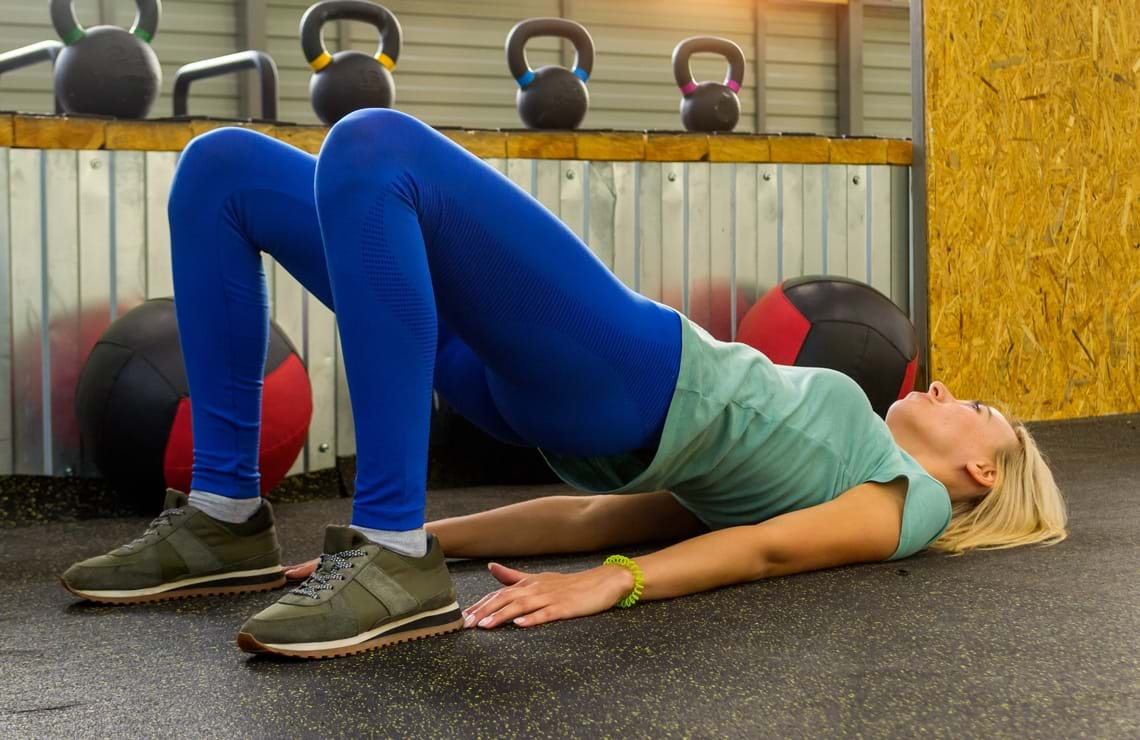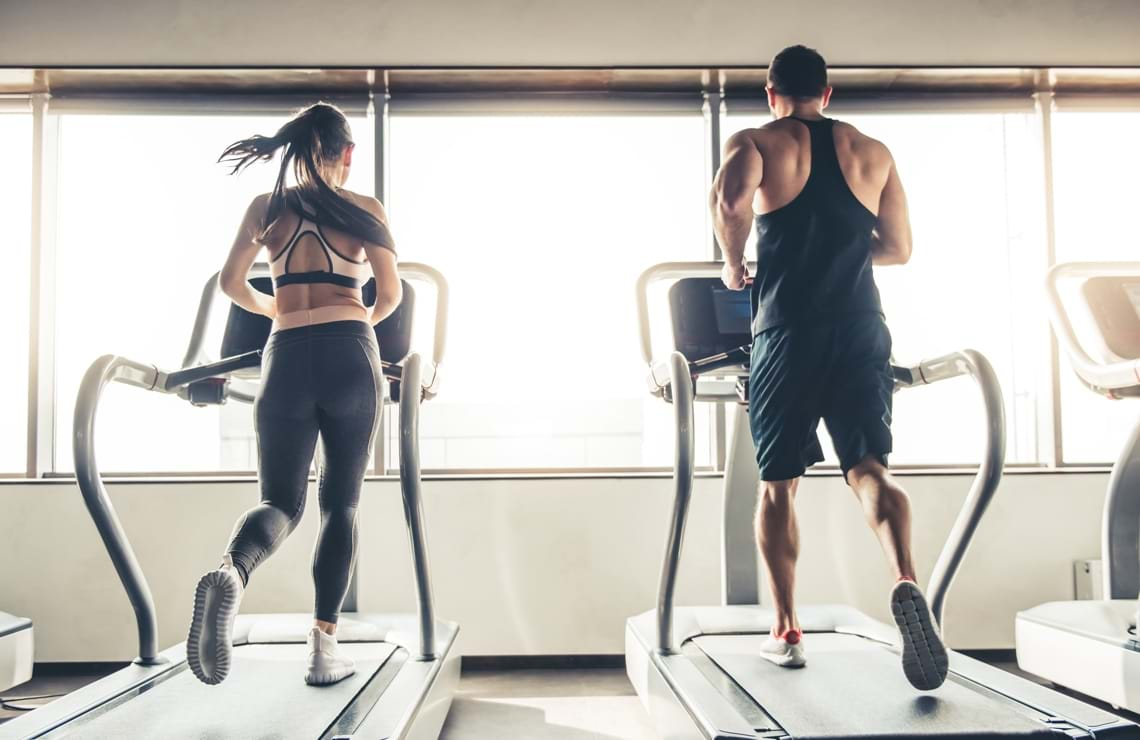The fall is one of the best times of the year to be a sports fan. Baseball and Canadian football are both in full swing, with hockey, basketball, American football and soccer all on the horizon.
Our favourite teams and athletes inspire us to get off the couch and into action ourselves. However, it’s important to properly prepare your body to engage in team sports to avoid injuries.
Whether you’re an aspiring pro athlete, a rec league all-star still living the dream or a casual participant, here are some workout moves to maximize your performance and help you avoid injuries while playing sports.
Hockey – Bulgarian split squat
Hockey is all about lower body explosiveness, and this unilateral (one leg) split squat variation will help you drive off one leg at a time.
The Bulgarian split squat puts a twist on the classic split squat by elevating the rear foot, and in doing so, it helps further engage the core and raises the difficulty by testing your balance.
To execute this move, grab a bench (or another knee-height surface) and rest the top of your rear foot on it while extending your other leg in front of you into a forward lunge position. Slowly lower yourself until your front thigh is parallel to the ground, making sure that your front knee does not extend past your toes. Finally, drive through the front heel to return to start position.
If you want more difficulty, you can add weight by holding one dumbbell in the goblet position or holding one dumbbell on each side.

Basketball – Lateral lunge
The lateral lunge is the perfect workout move for basketball players because it directly reflects the movement on defence. As an added benefit, it helps develop flexibility in your hips and groin, which is directly applicable to many movements on the court.
Start in a standing position with your feet hip-width apart, then step to the left, keeping your toes pointed forwards. Squat onto the left leg, keeping your right leg extended and your hips back. Get as low as possible and hold the position for 2-3 seconds before returning to your initial standing position.
Repeat 8-10 times before switching legs.

Football – Glute/hip bridges
One of the most common injuries in football is a hamstring pull/tear, due to the emphasis on, and weakness of this muscle. A large part of hamstring injuries are due to inactive glutes – the gluteus is the biggest and strongest muscle in the posterior chain, and when it’s not performing at its best, it will pass responsibilities off to the hamstrings.
Inactive glutes are often a result of sitting all day–combat your inactive desk job with glute/hip bridges.
Lay on your back, preferably on a mat. Bend your knees and place your feet hip-width apart. Keeping your feet below your knees and your shoulder blades on the mat, lift your hips towards the ceiling. Hold at the top of the movement before slowly lowering your hips back to the ground. Focus on keeping your upper back rooted to the floor and driving through your seat muscles to get the most out of this movement.

Soccer – HIIT Treadmill
Stamina is especially key in soccer, a sport where you can play an entire 90-minute game (plus stoppage time) with just one break at half-time.
High-intensity interval training can prepare you for the frequent switches from a light jog or walk to a sprint that is characteristic of soccer.
Set the treadmill to a light jogging speed for around 10 minutes or until you’re at medium work rate. Ramp up to a speed close to your maximum and sprint for 30 seconds, then jog for 30 minutes.
Repeat the cycle 3 times.
You can also check out a HIIT Treadmill work out here.

Bonus – Dumbbell step-ups
Dumbbell step-ups can be instrumental in building explosion for sprinting and jumping, especially when you’re elevating for a header. Stand in front of a bench or another similar platform with a dumbbell in each hand. Place one foot on the raised surface, then drive through that same foot to propel yourself upwards until the planted leg is straight. Hold this position for 2-3 seconds before returning to the ground.
Switch legs and repeat the motion on the other side.

